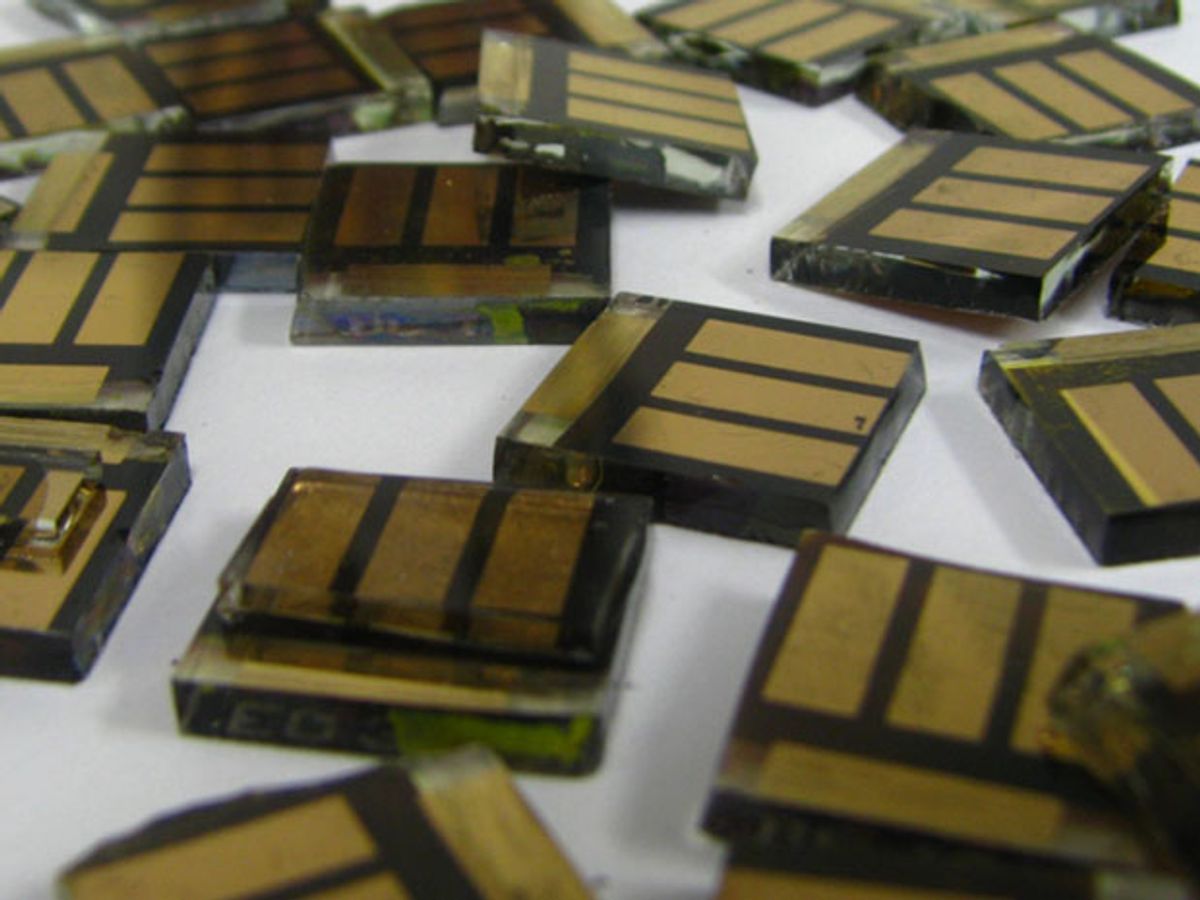Photovoltaic cells made from perovskite materials have rapidly become one of the hottest areas in energy research over the past few years. But most of these materials have included the toxic metal lead, raising concerns about their environmental impact.
Now, two teams have independently developed perovskite cells that swap lead for tin, which could help to convince investors and regulators that the cells have a commercial future.
Perovskite materials are named after the common crystal structure they share with a naturally occurring mineral. Cells using the material made a modest debut in 2009, reaching energy conversion efficiencies of 3.8 percent.
But they were soon leaping ahead, rising to 10 percent efficiency in 2012, and 15 percent by 2013. The same year, Henry Snaith at the University of Oxford, UK, unveiled a perovskite cell that reached 15 percent efficiency, but with a much simpler design. His device relied on a thin film of methylammonium lead iodide chloride to do double duty as both light absorber and charge carrier. Since then, photovoltaic cell efficiencies have ticked up further, to 17.9 percent—an advance achieved by Sang Il Seok at the Korean Research Institute of Chemical Technology in Daejeon.
This efficiency already rivals that of bulkier silicon cells, and is gaining fast on thin-film photovoltaic cells that use materials such as copper indium gallium selenide (CIGS). The unprecedented progress is made all the sweeter by the fact that these perovskites are extremely stable, use cheap and abundant materials, and are simple to incorporate into cells.
But using lead-based materials was obviously not ideal. There were only small amounts of lead in each cell, but enough to have a significant environmental impact if they were deployed widely around the world. Researchers worried that this might limit their use. “It’s a problem when it comes to convincing investors,” says Mercouri Kanatzidis, a chemist at Northwestern University, Evanston, Illinois.
Snaith has now reported in Energy and Environmental Science that a cell made from methylammonium tin iodide, which is lead-free, is about 6 percent efficient. Just days later, Kanatzidis independently reported very similar results in Nature Photonics using methylammonium tin iodide bromide.
One major drawback is that tin perovskites are unstable, and must be handled under an inert atmosphere. But Kanatzidis says that the necessary processing methods are already well-established in industry, and that the cells are fairly stable once sealed in an air-tight housing. He is also confident that tin perovskites can be pushed far above 6 percent efficiency. “There’s no showstopper,” he says.
Tin perovskites might offer an insurance policy if lead perovskites do turn out to be an environmental problem. But looking for alternative metals is also smart science, because they might actually improve the cells’ performance. The tin-based cells, for example, actually produce a higher voltage than the original lead perovskite cells. “It may well be that tin ends up being higher efficiency,” says Snaith.
The similarities between the results from the two labs highlights the frenzied pace of the field. “The competition is amazing,” says Snaith. “You can’t assume you’re doing anything unique.”
Snaith has cofounded a start up, Oxford Photovoltaics, to commercialize his perovskite cells, and Kanatzidis is talking to solar PV manufacturers about his tin tech. But both agree that the biggest hurdle for commercial deployment of the cells is their long-term stability. “The biggest question is whether we can make these things stable for 25 years,” says Snaith.



